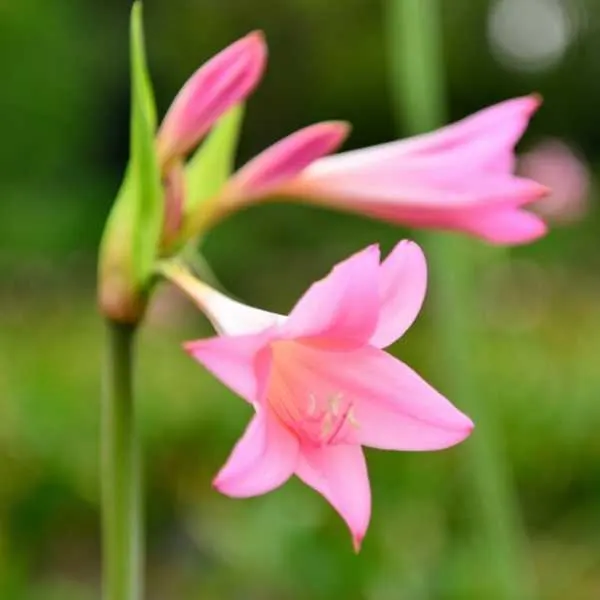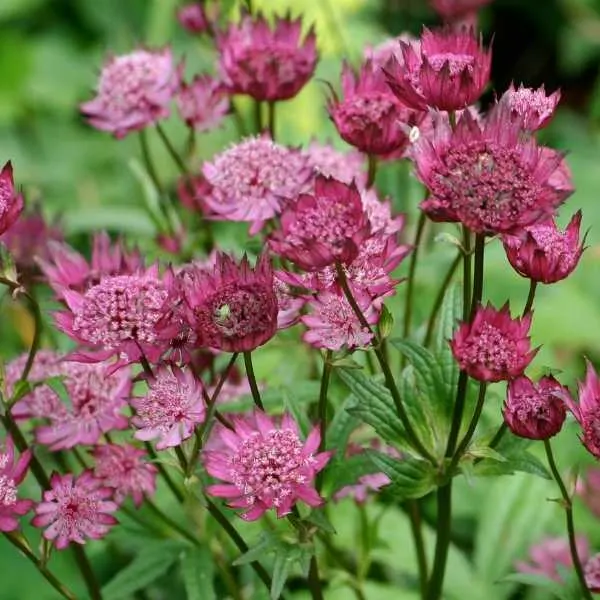Enchanting Pink Flowering Perennials that Will Add a Touch of Warmth to Your Garden
If there is one color that screams summer it is the color pink. Pink conveys the feeling of warmth of those long summer days as well as the innocence of childhood and bloom of first love.
Choosing pink perennial flowers for your yard or garden seems to encompass the essence of summer and go beautifully with all the other colors of flowers in your garden.
Here is a look at some terrific pink flowering perennials in a variety of hues.

Related Articles:
- 12 Charming Flowering Yellow Perennials
- 9 Elegant Purple Flowering Perennials
- 9 Bold Flowering Red Perennials
- 11 Blue Flowering Perennials for an Enchanting Garden
10 Vibrant Pink Perennial Flowers for Your Garden
#1. Bergenia

Native to Europe and Asia, Bergenia flowers are often used as flower borders due to their small height of 1 or 2 feet tall. These flowers have heart shaped glossy leaves and cone shaped flowers that come in pink, red or white that bloom from April to May.
Bergenia grows best in zones 3 through 8 and prefer partial sun or shady conditions and moist loamy or clay soil as long as it is well-drained.
#2. Pink Coral Bells

Native to North America, Coral bells make excellent border flowers, growing 8 to 18 inches tall.
These beautiful bright pink flowers (also red, orange or white) are extremely delicate looking with their tiny bell shapes. They grow on tall stems and have round, hairy lobed leaves and bloom during the spring and summer months.
Coral-bells grow best in zones 3 through 10 and do almost equally well in full or partial sun as well as shade as long as the soil is moist and well-drained.
#3. Lychnis Coronaria (Rose Campion)

Native to Southeastern Europe, Lychnis are lovely flowering pink perennials that are fairly easy to grow.
These flowers have silver-green foliage and pale or hot pink (also white) five petaled flowers that sit atop tall angular stems that are 2 to 3 feet tall. Lychnis bloom from spring through late summer.
Lychnis grow best in zones 3 through 8 and prefer full or partial sun and loam or sandy soil as long as it is well drained. These plants are attractive to butterflies and hummingbirds.
Although Lychnis are perennials, they only return for a few years before needing replanting.
#4. Pink Tulips

Native to Central Asia, but often associated with the Netherlands, tulips are one of the first flowers to bloom in the spring.
Tulips come in a wide variety of colors with pink tulips running the gambit from very pale colored all the way to bright magenta. Tulip flowers are cup shaped and have 2 to 6 blue-green leaves per plant.
These plants grow between 6 inches and 2 feet in height. They grow best in zones 3 through 8 and prefer full sun and moist well-drained soil.
#5. Rodgersia

Rodgersia is a flowering plant native to South Asia. This plant thrives in wet areas near ponds or in damp wooded areas.
It is noted for its dark green compound serrated leaves and clusters of pink blossoms (also white) that grow on stalks that can reach between 3 and 5 feet in height. This flower tends to bloom from June to august.
Rodgersia grows best in zones 5 through 7 and prefers full sun. These fragrant flowers are very attractive to pollinators such as butterflies and bees.
#6. Pink Anemone

Anemone is a label that describes a wide variety of flowers in the Ranunculacae family. These flowers are native to temperate zones around the world with many varieties being native to the United States.
The flower stems of these flowers grow from a basal clump topped by single poppy like flower that sways in the breeze giving these flowers the nickname of windflowers.
While these flowers come in pink, they also come in red, white and purple. These flowers grow 6 inches to 4 feet tall.
Anemones are best suited to zones 3 through 10 and prefer full to partial sunshine and rich moist soil.
#7. Amarcrinum

The Amarcrinum is a cross between the Amaryllis, Belladona and Crinun plants. This plant has deep green tough leathery leaves and light pink lily flowers. There are 10 to 16 funnel shaped flowers per plant with each plant standing at a height of 2 feet.
This hybrid lily grows best in zones 7 through 10 and prefers full sun and well-drained soil.
#8. Oriental Lily

The oriental lily is a hybrid lily that comes in a variety of colors, including some petty shades of pink that run from the palest pink to dark crimson.
This plant has thick rigid stems, strappy leaves and huge flowers with a strong fragrance. These flowers bloom from the middle to the end of summer and are a long bloomer.
The Oriental Lily is best suited to zones 3 through 9 and prefers partial sun and moist well-drained soil. They make great cut flowers.
#9. Obedient Plant

The Obedient plant is native to North America often referred to as a False Dragonhead is a member of the mint family.
These plants have long serrated leaves and snapdragon like flowers that blooms from the bottom up. The flowers may be pink as well as purple or white and reaches heights of 3 to 4 feet tall. And they bloom from late summer until late fall.
Obedient plants are fast growing, but can spread aggressively. They grow best in zones 3 through 9 and prefer to be grown in full sun and well-drained soil. Hummingbirds, butterflies and bees find this plant very attractive.
#10. Astrantia

The Astrantia plant is native to Europe and Western Asia. This flower is actually a member of the carrot family. Astrantia flowers grow in mounded clumps about 1 and ½ feet tall.
The foliage of this plant is a medium green with divided basal leaves growing to be about 3 to 6 inches long. The flowers have pointy petals that look a bit like a pincushion.
While these flowers also come in red and white, they normally come in either pink or white with pink edges and bright pink centers.
This flower grows best in zones 4 through 9 and prefers to grow in partial shade and well-drained soil.
Final Thoughts on Pink Perennial Flowers
Pink flowers such as the ones above make wonderful editions to your garden. The good news is, there are different varieties and shades of pink flowering perennials you can choose from depending on your taste and the area you live in.

